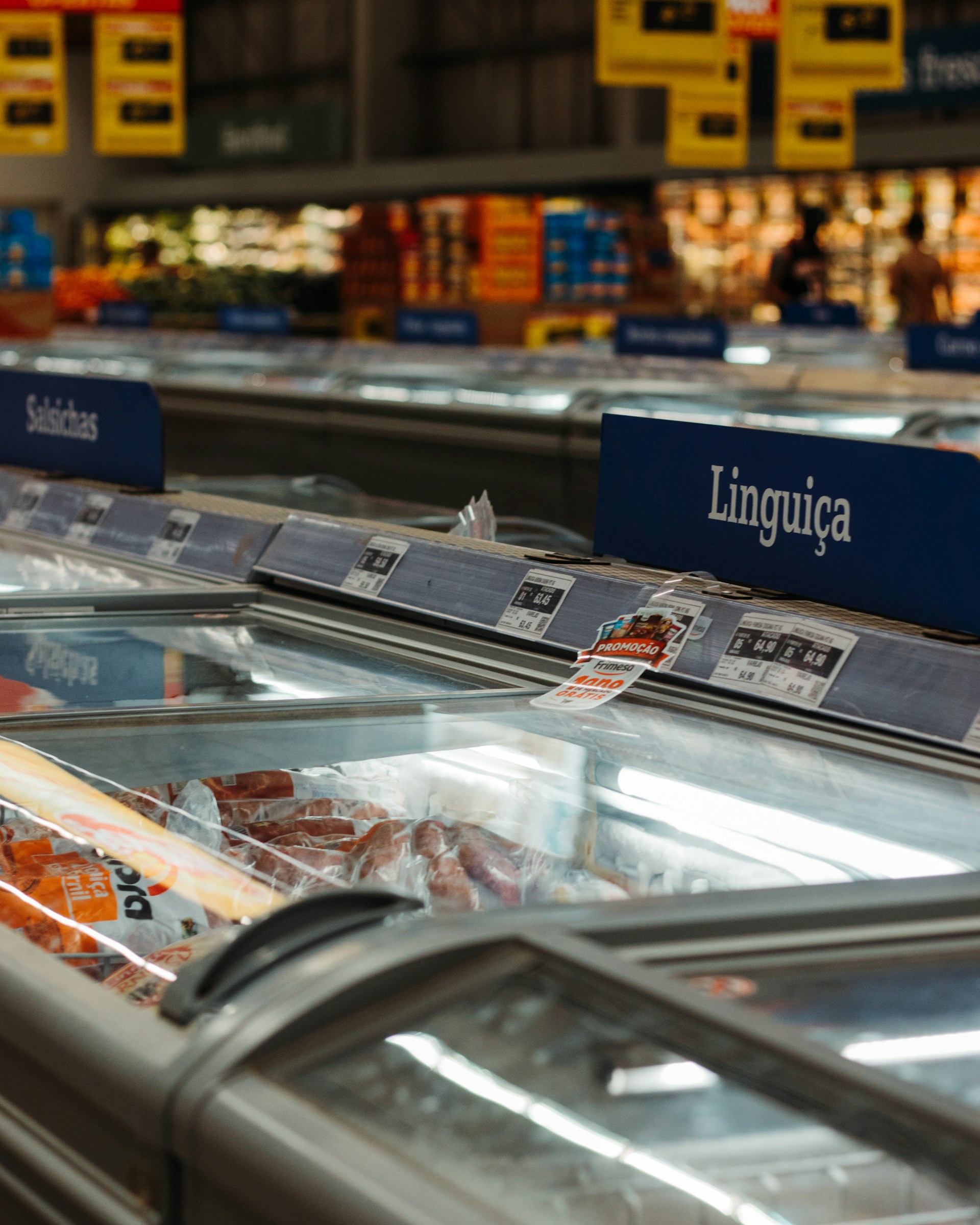For most of us, the freezer is a critical appliance in our homes, playing a key role in our food storage strategy. It keeps our food frozen, maintains its quality, and extends the shelf life significantly. However, maintaining the right temperature in your chest freezer is a crucial detail that often gets overlooked. With various types of food needing different temperature conditions for optimal storage, it’s important to understand how to set and control your freezer’s temperature.
Understanding the Importance of Optimal Freezer Temperature
Before we delve into the specifics of temperature settings, we need to comprehend why maintaining an optimal temperature in your chest freezer is so important.
Also to discover : What are the best strategies for preventing mold in bread boxes?
The primary purpose of your freezer is to keep your food items in a frozen state. The ideal temperature for a freezer is 0 degrees Fahrenheit (-18 degrees Celsius). At this temperature, the growth of bacteria and microorganisms that cause food to spoil is effectively halted. However, this doesn’t mean that food kept at this temperature will remain safe indefinitely. Over time, the quality of the food will degrade. This is why it is essential to consume frozen foods within their recommended storage periods.
Maintaining the right temperature also ensures the integrity of your food. Fluctuations in temperature can cause ‘freezer burn’, a condition where food loses its moisture in patches, leading to a dry, greyish-brown leathery spot. Freezer burn does not make the food unsafe, but it can make it unappetizing.
Also to read : What are the best strategies for preventing mold in bread boxes?
Setting the Temperature of Your Chest Freezer
Now that you know why the right temperature matters, let’s discuss how to set your freezer’s temperature.
Freezers don’t usually come with specified temperature settings like refrigerators. Instead, they have a manual dial which can be adjusted to set the preferred coldness. Always check the appliance manual to understand the correct settings.
As a general rule, the dial is set in increasing numbers from 1 to 5 or 1 to 7, in which the higher the number, the colder the freezer will be. However, settings can vary between manufacturers, and a setting of 3 to 4 is usually ideal.
To ensure that your freezer is at the right temperature, it’s best to use a stand-alone freezer thermometer. These thermometers are designed to provide accurate readings even at extremely low temperatures. Place it in the area where your food is stored, wait for 5-6 hours, and then check the temperature.
Organizing Your Food Items for Optimal Freezing
Organization is a crucial element to ensure that your food freezes at the ideal temperature. Here’s how you can do it.
Start by categorizing your foods based on their types. Meats, fruits, vegetables, dairy, and baked goods should all have their designated areas. This not only helps maintain the temperature but also prevents cross-contamination.
Secondly, make use of vacuum-sealed bags or airtight containers to store your food. These tools help preserve the quality of your food by preventing air exposure, which can lead to freezer burn.
Lastly, don’t forget to rotate your food items. Always keep the older items in front so they get used first. Remember, even the best freezing practices can’t keep food fresh indefinitely.
The Best Practices for Freezing Different Types of Foods
Different types of foods require different freezing practices. Here are some tips to help you out.
For meats, poultry and fish, it is best to wrap them tightly in a plastic freezer bag and squeeze out as much air as possible. They can usually last up to 1 year.
Fruits and vegetables should be blanched before freezing. This helps maintain their color and nutritional quality. They can be frozen for 8 to 12 months.
Baked goods like bread, cookies and cakes can be wrapped in plastic wrap and then placed in a freezer bag. These will remain fresh for about 3 months.
Leftovers should be stored in airtight containers and used within 3 months.
What to Do When the Power Goes Out?
Power outages can be a real problem when it comes to maintaining a steady temperature in your chest freezer. Here’s what you can do in such a situation.
Firstly, keep the freezer door closed. A full freezer will hold its temperature for about 48 hours if the door stays closed. Secondly, if the power outage is going to last long, you can use dry ice or block ice to keep the freezer cold.
Remember, when the power comes back on, check the temperature of the freezer. If it’s still at or below 0 degrees Fahrenheit, the food is safe to refreeze. If any foods have thawed but are still below 40 degrees Fahrenheit, they should be used immediately.
In conclusion, maintaining an optimal temperature in your chest freezer is not just about setting the dial and forgetting about it. It requires understanding the needs of different types of food, organizing your freezer correctly, and knowing what to do during power outages. By following these steps, you can ensure that your food remains safe and nutritious for as long as possible.
How to Handle Frequent Temperature Fluctuations
Temperature fluctuations in your chest freezer can be a common issue, especially in seasons with extreme weather changes or if the freezer is located in an area with unstable environmental temperatures. Regardless of the cause, frequent changes in freezer temperature can compromise the quality of your frozen food and even pose food safety risks.
The first step in dealing with temperature fluctuations is to identify their source. Check the location of your freezer – is it exposed to direct sunlight or near a heat source like a dishwasher or oven? Moving it to a cooler, shaded spot can significantly reduce temperature changes.
Next, refrain from opening the freezer door too often. Each time the freezer is opened, warm air enters, causing a rise in the internal temperature. Avoid unnecessary openings and close the door as quickly as possible when you do need to access it.
Another effective method to maintain a stable temperature is to keep your freezer well-stocked. The more items in the freezer, the less air space there is to heat up. However, be careful not to overstuff it as this can prevent cold air from circulating effectively.
Investing in a high-quality freezer thermometer can also help you monitor the freezer temperature regularly and adjust the settings as needed. By keeping a close eye on the temperature, you can ensure it stays at the required 0 degrees Fahrenheit and adjust the settings promptly if needed.
Regular Maintenance for Your Chest Freezer
Regular maintenance is key for the smooth and efficient operation of your chest freezer. Besides helping maintain the correct temperature, regular checks and cleaning can also extend the life of your freezer and prevent costly repairs or replacements.
Dust and grime can affect the efficiency of your freezer and make it work harder to maintain the correct temperature. Make it a habit to clean the exterior and interior of your freezer at least every 3 months. Use a mild detergent or baking soda solution to gently clean the surfaces, then thoroughly dry it to prevent frost build-up.
Defrosting your freezer is another important maintenance task. While many modern freezers have an auto-defrost function, you may still need to defrost manually if a thick layer of frost builds up. Too much frost can take up storage space and decrease the efficiency of your freezer, causing inconsistent temperatures.
Check the door seals regularly as well. A loose or damaged seal can let warm air in and cold air out, leading to temperature fluctuations. If you notice any issues, replace the seals immediately.
Finally, servicing your freezer by a professional can also help maintain its performance. They can check for any potential issues and fix them before they become serious problems.
Conclusion
In the end, maintaining an optimal temperature in your chest freezer is an ongoing task that requires regular attention and effort. From setting the correct temperature and organizing your food correctly, to handling temperature fluctuations and conducting regular maintenance – every step is crucial to prolong the life of your frozen food and ensure food safety. With the right practices, your freezer can be a dependable ally in your food storage strategy, helping you save money, reduce food wastage, and enjoy nutritious meals anytime.






